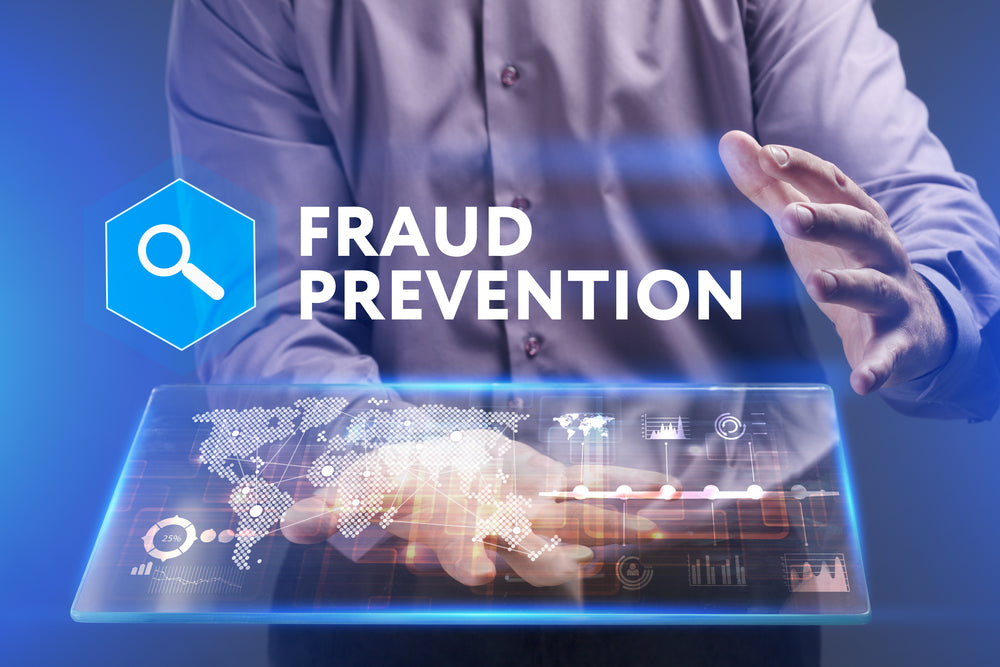
Navigating the Evolving Landscape of Fraud Detection and Prevention
Share

In an increasingly digitized world, the importance of robust fraud detection and prevention systems has never been more apparent. As businesses and individuals increasingly rely on online platforms for transactions, cybercriminals have become equally sophisticated, exploiting vulnerabilities with alarming precision. However, cutting-edge technologies and proactive strategies are transforming the fraud prevention market into a dynamic and highly lucrative sector.
For investors, this evolution signals immense growth potential. By leveraging advanced tools like AI, blockchain, and biometric authentication, businesses can enhance security while opening doors to untapped markets. Let’s dive into the key trends shaping the future of fraud detection and prevention—and why this is an exciting space for strategic investment.
1. Machine Learning and AI: The New Vanguard of Fraud Detection
Machine learning (ML) and artificial intelligence (AI) have become indispensable in combating fraud. These technologies excel at analyzing vast datasets in real-time, identifying patterns, and detecting anomalies that signal potential fraud.
For instance, in September 2023, McAfee introduced AI-driven scam protection capable of identifying malicious links across emails, texts, and social media platforms. By countering sophisticated AI-powered scams, this innovation underscores how AI can both neutralize and outpace cyber threats.
The integration of AI into fraud detection systems enables businesses to:
· Reduce false positives: Minimizing disruptions for legitimate transactions.
· Act in real-time: Mitigating risks before they escalate into losses.
For investors, the adoption of AI-powered fraud prevention tools represents a high-growth opportunity, particularly as industries across banking, e-commerce, and healthcare increasingly prioritize digital security.
2. Real-Time Monitoring: A Game-Changer in Fraud Prevention
Fraud prevention has shifted from reactive to proactive, thanks to real-time monitoring systems. These technologies enable businesses to detect and respond to suspicious activities instantaneously, minimizing financial losses.
A notable example is Jack Henry’s Payrailz Fraud Monitor, introduced in June 2023. This AI-driven tool integrates with payment systems to provide real-time fraud detection for person-to-person (P2P) payments, bill payments, and account-to-account transfers.
For businesses, real-time monitoring delivers:
· Enhanced customer trust: By ensuring secure transactions.
· Operational efficiency: By automating threat detection and response.
As the demand for seamless, secure digital experiences grows, solutions like these are poised for widespread adoption, creating significant investment potential in fraud prevention platforms.
3. Behavioral Analytics: Spotting Fraud Before It Happens
Behavioral analytics leverages user data—such as transaction patterns and location history—to establish baseline behaviors. By detecting deviations from these norms, businesses can identify fraud in its earliest stages.
TransUnion’s TruValidate Device Risk with Behavioral Analytics, launched in September 2022, combines device recognition and user behavior signals to deliver tailored fraud risk assessments. With access to a global network of over 6,000 fraud analysts and billions of devices, this tool exemplifies the power of behavioral analytics in mitigating risks.
For investors, behavioral analytics represents a key pillar of the fraud prevention market, offering scalable solutions that can adapt to the evolving tactics of cybercriminals.
4. Biometric Authentication: Raising the Bar for Security
Biometric authentication is rapidly gaining traction as a fraud prevention measure. By leveraging unique physical characteristics like fingerprints and facial recognition, biometrics offers unparalleled security against impersonation.
In September 2022, Self, a Web3 fraud prevention platform, introduced decentralized digital IDs with biometric features. Built on blockchain technology, this platform offers secure, tamper-proof identity verification for users.
Biometric solutions are particularly appealing in industries like:
· Finance: Enhancing authentication for mobile banking.
· Healthcare: Protecting sensitive patient data.
· E-commerce: Preventing account takeovers and payment fraud.
The biometrics market is expected to grow significantly, presenting investors with an opportunity to back innovative security technologies.
5. Blockchain: The Future of Identity Verification
Blockchain technology is revolutionizing fraud detection by providing transparent, tamper-proof systems for identity verification. With its inherent immutability, blockchain ensures the accuracy of identity data, reducing the risk of fraudulent activity.
For example, in October 2022, Mastercard launched Crypto Secure, which uses blockchain data and AI algorithms to assess the risk of illegal activities within cryptocurrency transactions. This integration strengthens security while fostering trust in the rapidly growing crypto ecosystem.
For investors, blockchain’s application in fraud prevention offers a dual opportunity: improving security and enabling growth in adjacent markets like cryptocurrency and decentralized finance.
A Market Primed for Growth
The global fraud detection and prevention market is projected to expand as businesses and governments alike seek to mitigate the rising tide of cyber threats. Key drivers include:
· Geopolitical factors: Heightened cyberattacks during conflicts amplify the need for robust defenses.
· Digital transformation: As businesses digitize, demand for secure systems continues to grow.
· Regulatory pressures: Compliance with data protection laws fuels investment in fraud prevention technologies.
Why Investors Should Take Notice
The fraud detection and prevention market is not just about mitigating risks—it’s about enabling trust, driving innovation, and opening new revenue streams. From AI-powered tools to blockchain-based solutions, the technologies reshaping this field are creating immense opportunities for early adopters.
As cyber threats evolve, so too must the solutions to combat them. For investors, now is the time to back the companies leading this charge and capitalize on a market poised for exponential growth.
Conclusion: Securing the Future
Fraud detection and prevention is no longer a reactive necessity—it’s a strategic imperative. With innovations like machine learning, biometrics, and blockchain driving the market forward, the potential for growth is unprecedented. For businesses and investors alike, the opportunity lies in embracing these technologies to build a more secure, trustworthy digital future.
As the landscape evolves, one thing is clear: the fight against fraud is not just a challenge—it’s an opportunity to lead.